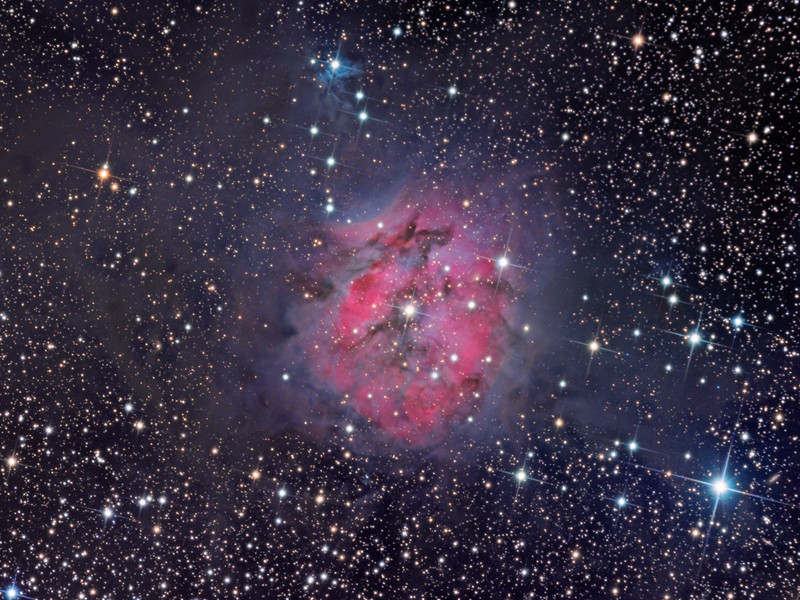
|
Credit & Copyright: Neil Fleming,
David Plesko
Explanation:
Inside the Cocoon Nebula is a newly developing cluster of stars.
Cataloged as
IC 5146, the beautiful
nebula is nearly 15
light-years wide, located
some 4,000 light years away toward the northern constellation
Cygnus.
Like other star forming regions, it stands out
in red, glowing, hydrogen gas
excited by young, hot stars
and blue, dust-reflected starlight
at the edge of an otherwise invisible
molecular cloud.
In fact, the bright star near the center of this nebula is likely
only a few hundred thousand years old, powering the nebular glow as it
clears out
a cavity in the molecular
cloud's star forming dust and gas.
This
exceptionally deep color view
of the Cocoon Nebula traces
tantalizing features within and surrounding the dusty
stellar
nursery.
|
January February March April May June July August September October November December |
| |||||||||||||||||||||||||||||||||||||||||||||||||||||||
NASA Web Site Statements, Warnings, and Disclaimers
NASA Official: Jay Norris. Specific rights apply.
A service of: LHEA at NASA / GSFC
& Michigan Tech. U.
Based on Astronomy Picture
Of the Day
Publications with keywords: star formation - molecular cloud
Publications with words: star formation - molecular cloud
See also:
- APOD: 2025 August 1 Á Small Dark Nebula
- APOD: 2025 July 10 Á Lynds Dark Nebula 1251
- APOD: 2025 June 23 Á W5: Pillars of Star Formation
- APOD: 2025 April 28 Á Gum 37 and the Southern Tadpoles
- APOD: 2025 March 26 Á Star Formation in the Pacman Nebula
- The Protostars within Lynds 483
- Stardust in the Perseus Molecular Cloud
